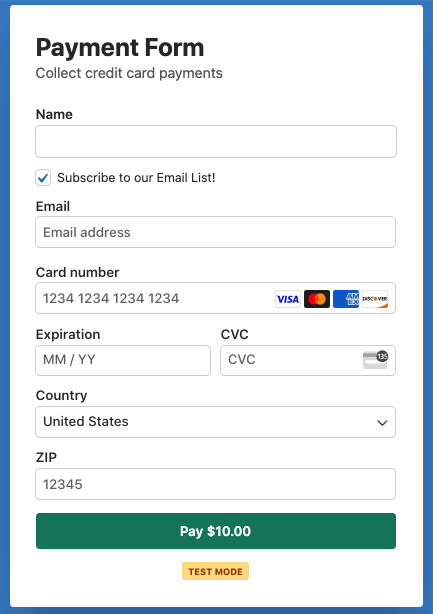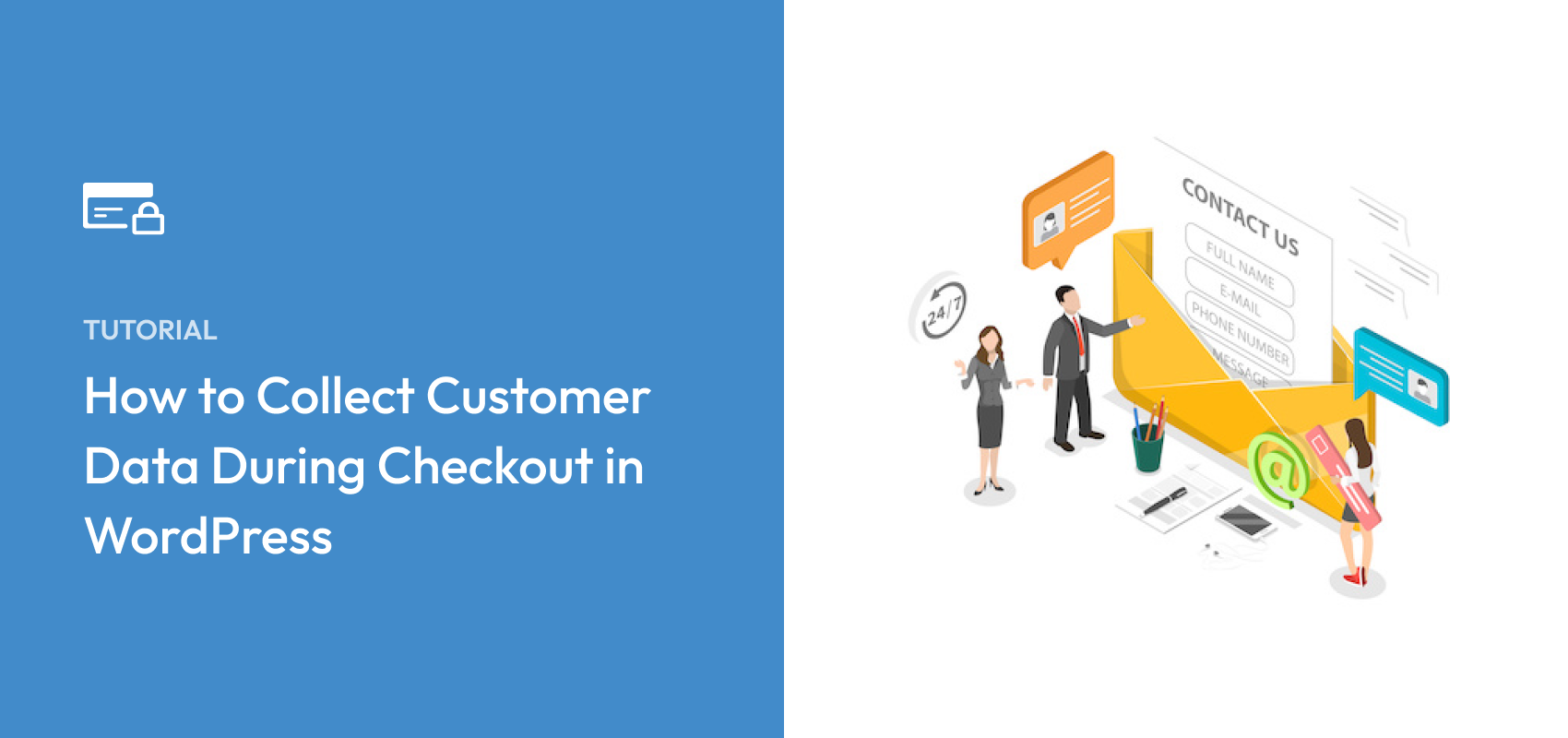How to Collect Customer Data During Checkout in WordPress
Last updated on
Did you know that you can easily collect customer data during checkout to help enhance your relationships with your customers and grow your business with an improved marketing strategy?
Data is the best tool you have when it comes to marketing your products and services. The more you know about your customers, the better you’re able to reach them and convince them that you can solve their problems now and in the future.
In this article, we’ll share how you can learn more about your customers during checkout and how to apply the information to your business.
In This Article
Collecting Customer Data During Checkout
The best way to discover more about your customers is to ask them directly. After all, they are the most reliable source of information about themselves and their business.
There are a few different ways to gain information about your customers, including interviews, surveys, online reviews, and even monitoring feedback via social media. However, automating the learning process by adding an extra question or two to your payment form is the easiest way to capture specific data points that can have a profound impact on your business.
Generally, it’s better to limit the number of additional fields you require your customers to complete during checkout to two or three. This ensures that you’re not overwhelming them during the process, while still collecting helpful information you can use in the future.
If you’re using WP Simple Pay, the #1 Stripe payments plugin for WordPress, to accept online payments on your site, you can easily customize the fields on your payment forms with text fields, checkboxes, and dropdowns using the plugin’s drag & drop payment form builder.
For now, let’s take a look at the top marketing data points you should collect to help you market your business to existing customers and learn more about the people who buy your products or services.
Marketing Data Points to Collect at Checkout
1. The Customer’s Name
It may seem obvious, but some stripped-down checkout flows don’t ask for the customer’s name. In some cases, other data points are sufficient to identify the customer – like their email address, account number, and shipping address.
Having your customers’ names will help if you have to email or call them. It’s easier and more personal to ask for a customer by name rather than an email address or their account number. It’s a good way to personalize all of your correspondence, whether automated or direct.
Fortunately, the customer’s name is an easy piece of data to acquire because no one feels burdened by giving it. Most people assume you need it. If you add a Name field, most people’s browsers will auto-populate it anyway.
When you collect your customer’s name using a WP Simple Pay payment form, you can send your customers personalized payment confirmation emails, as well as create automated recent sale notification popups and posts for your Facebook Page to help boost your social proof.
2. Demographic Information
Demographics are data points used to segment people into groups and assess their behavior. We can make reasonable assumptions based on demographic data.
For example, it’s safe to assume that a person in their mid- or late-60s is thinking about retirement. If you have a product or service related to retirement, you would want to target people in their 60s rather than people in their 20s.
Here’s a list of demographic data points you might find useful:
- Age
- Gender
- Race/ethnicity
- Marital status
- Number of children
- Annual income
- Location
- Education level
- Nationality
- Disabilities (if any)
- Military status/history
- Living status (homeowner or renter)
- Political affiliation
- Religious affiliation
- Language
You probably don’t need all of those data points. For instance, there’s no point in asking if your customer has disabilities if your product or service doesn’t serve disabled people.
However, let’s say your nonprofit organization is attempting to win back lapsed donors. Getting some extra information from your current donors regarding their demographics can help you make needed adjustments to your fundraising campaigns.
3. Company Information
If you sell to B2B customers, it helps to know something about their company and professional life. This information will help you target similar people in the future.
Here are some data points you might request:
Industry – This data point is important if you sell to people in multiple industries. You’ll want to know which ones offer the most business. If your customers come primarily from one industry, you may consider niching into that industry or creating products and services specifically for them.
Company Size – The size of your customers’ companies gives you insight into their needs and problems. For instance, a small bootstrapped company probably needs to see results from your product or service faster than a large global corporation.
Job Title – Job title tells you a lot about the people who make purchasing decisions at your customers’ companies. For example, if marketing associates typically purchase your product rather than marketing executives, you would know to adjust your messaging to appeal to marketing associates.
4. Referral Source
Whenever you make a sale or get a new client it’s important to ask where they came from. If you see any trends, you may want to invest more resources into effective channels.
For example, let’s say a number of your customers report being referred to your company by the same person. You would be wise to reach out to that person, find out why they’re such a loyal customer, reward them for their help, and find ways to get even more value out of them.
In other cases, a referral source may not necessarily be a person, but a program or channel you’ve invested in. If customers say they saw your posts in a Facebook group, for example, perhaps you should invest more time into that group.
5. Social Media Presence
It’s helpful to know where your customers spend time online. Don’t ask for links to their social media profiles, but consider giving them a checkbox to select one or more social media profiles they use. This will tell you where you need to spend time, especially if you see a clear trend.
6. Newsletter Opt-In
Technically, you aren’t supposed to send marketing communications to your customers just because they made a purchase. According to the CAN-SPAM Act, you’re only allowed to send transactional emails like receipts, shipping confirmations, refund updates, or other messages related to their purchase, but you need their explicit permission to send them promotional messages.
With all of that being said, your customers are the best people to market to. They’ve already shown interest in your products and services, so you can’t just let them go after the first purchase.
With WP Simple Pay, you can easily add a checkbox to your payment form that says something like, “Subscribe to our Email List!” or “Send me updates, content, and promotions.”

You can even check this box by default.

7. User Flow
This isn’t a question you can ask your customers directly, but it’s a valuable piece of information you should collect regarding anyone who reaches your checkout page.
User flow is the path your customers take to reach your checkout page. Understanding the user flows of your customers can help you understand what they need to make a buying decision.
For example, if you notice that your customers leave a product or service page to view your FAQs page before making a purchase, you could conclude that something is missing on those pages that they need. Oftentimes, simply optimizing your pages will help increase conversion rates and reduce checkout abandonment.
For more information, see our detailed guide on how to optimize product & services pages in WordPress.
Don’t Stop at Checkout
Learning about your customers shouldn’t stop once they purchase from you. You should send them surveys and request their feedback periodically and be sure to ask questions about their problems, preferences, and needs. Every data point you collect makes selling your products and services easier to similar people.
If you liked this article, you might also want to check out our guide on how to add custom fields to Stripe Checkout in WordPress.
What are you waiting for? Get started with WP Simple Pay today!
To read more articles like this, follow us on X.
Disclosure: Our content is reader-supported. This means if you click on some of our links, then we may earn a commission. We only recommend products that we believe will add value to our readers.


